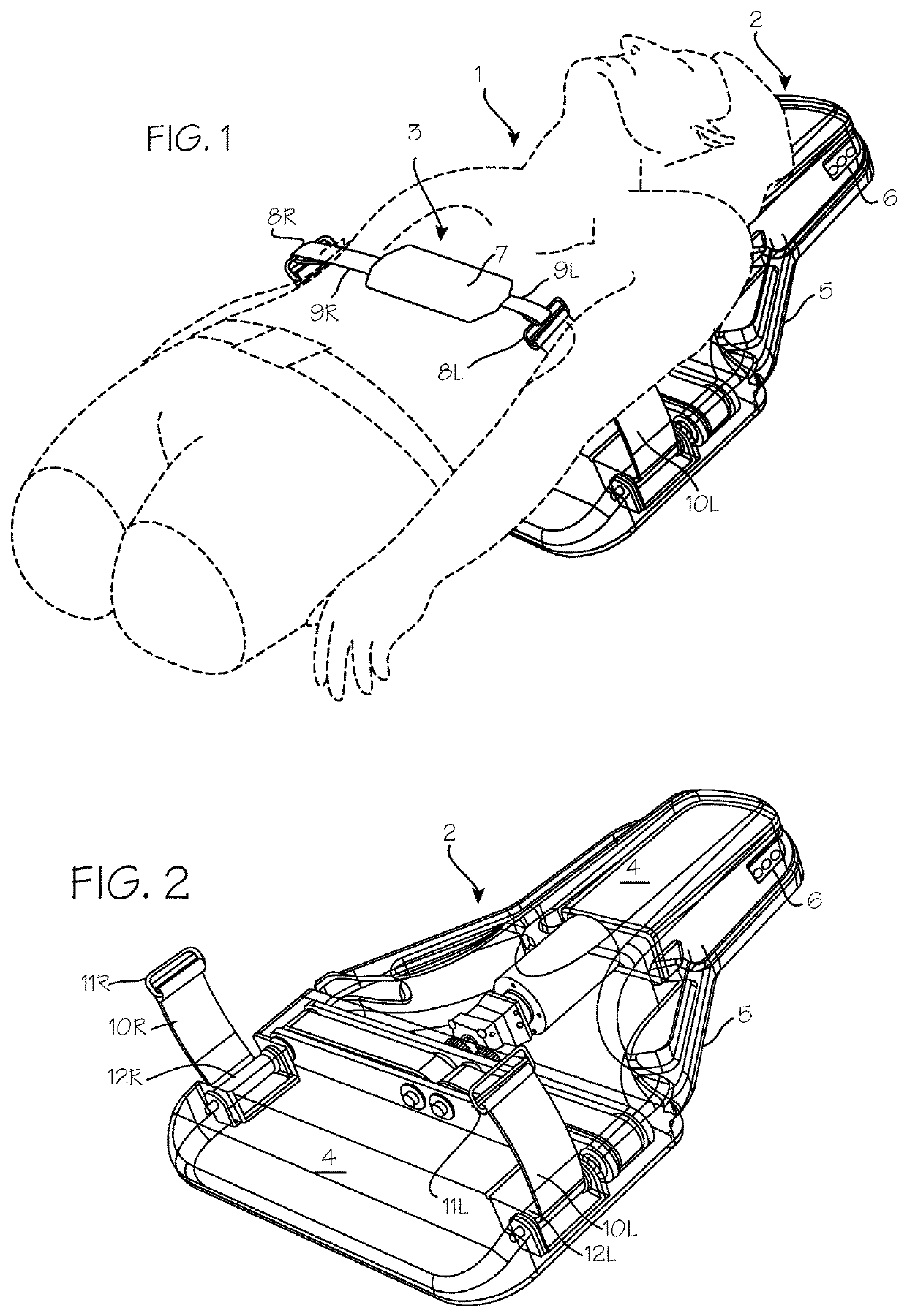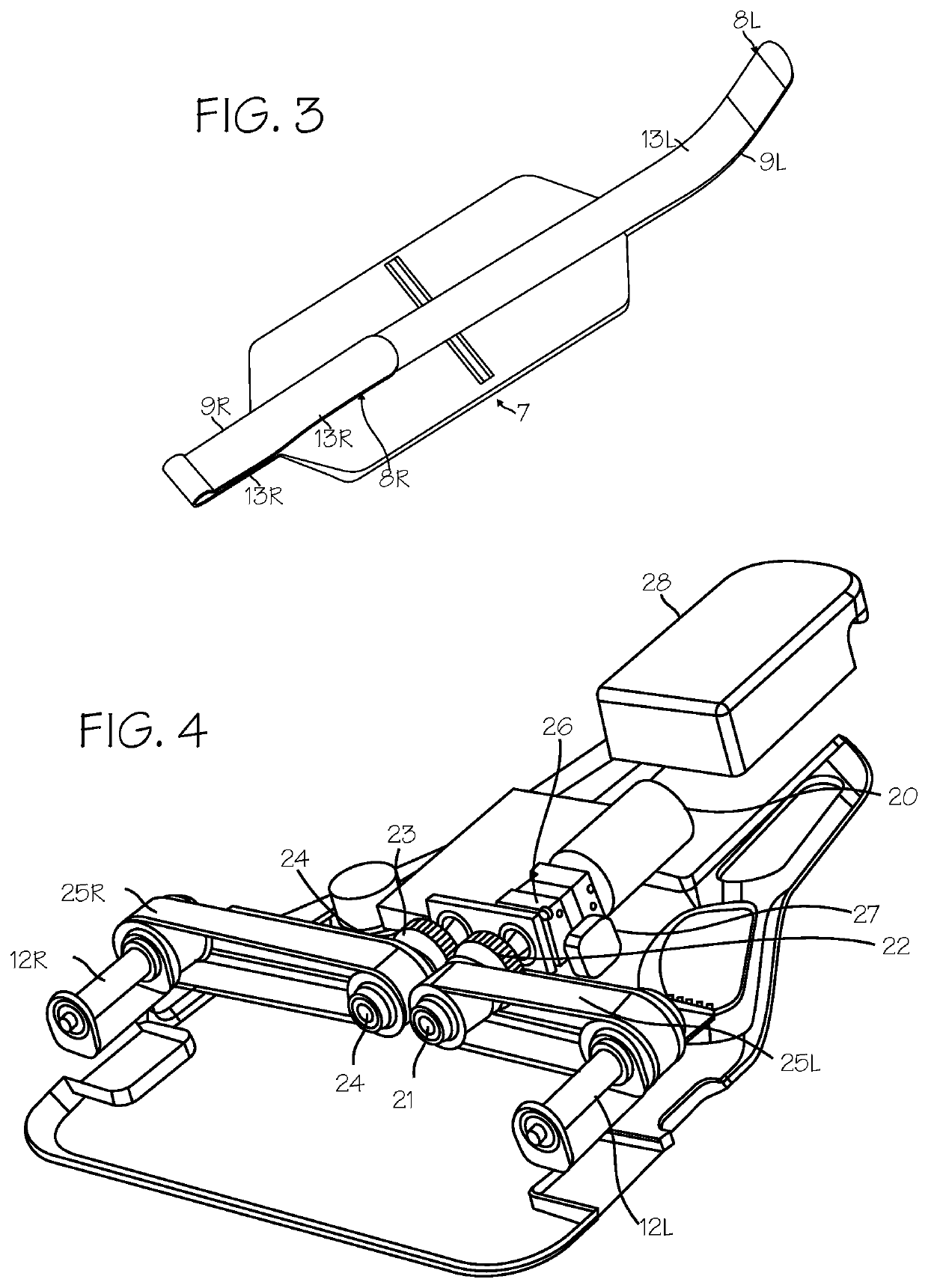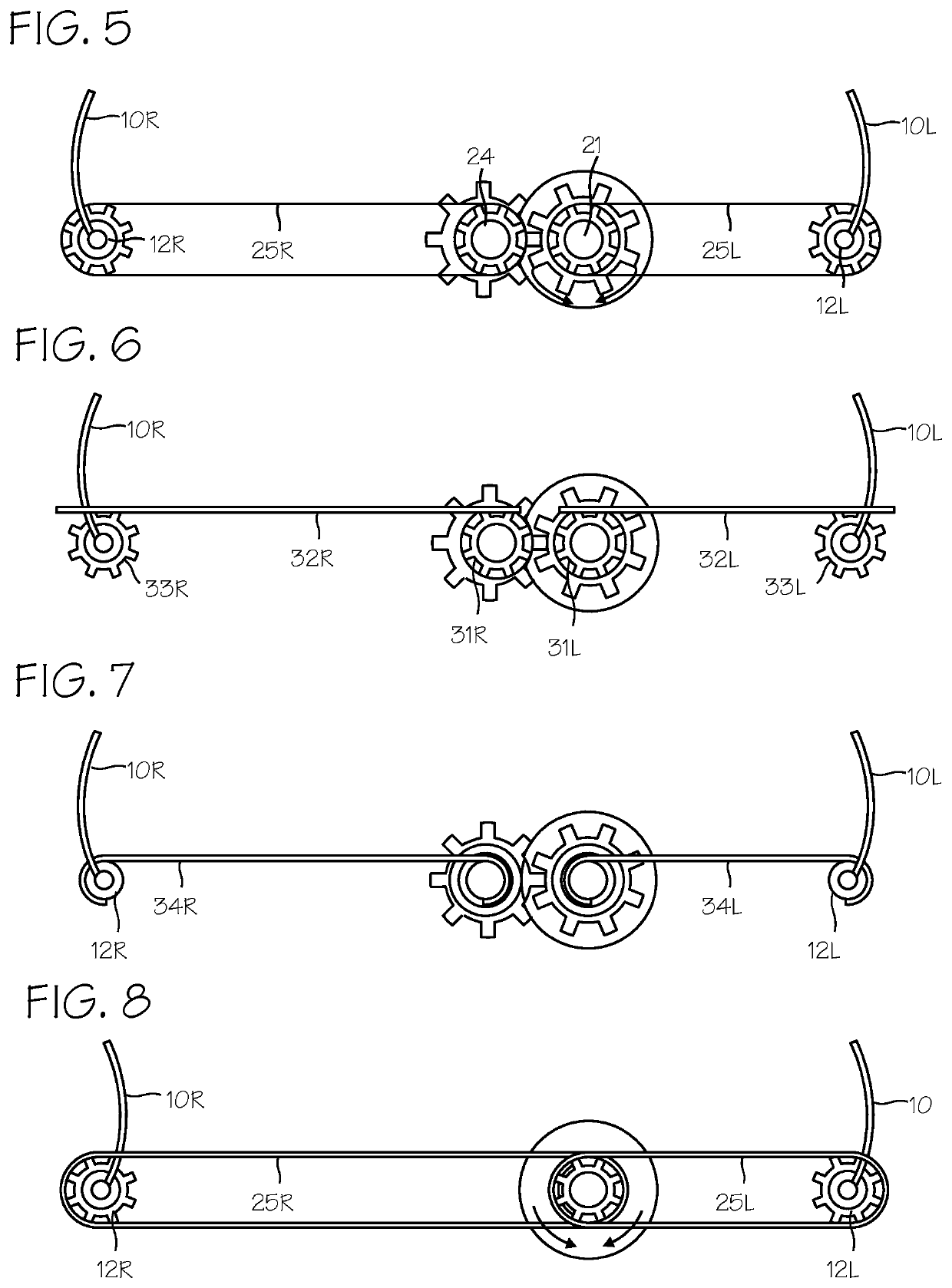Automated chest compression device
a chest compression and automatic technology, applied in the field of cpr, can solve the problems of inconvenient belt installation in either device, cpr-based compression devices, and ineffective clinical use, and achieve the effects of convenient removal and replacement of belts, convenient belt removal, and convenient belt removal
- Summary
- Abstract
- Description
- Claims
- Application Information
AI Technical Summary
Benefits of technology
Problems solved by technology
Method used
Image
Examples
Embodiment Construction
[0018]FIG. 1 shows the chest compression device fitted on a patient 1. The chest compression device 2 applies compressions with the compression belt 3. The chest compression device 2 includes a belt drive platform 4 sized for placement under the thorax of the patient, upon which the patient rests during use and which provides a housing 5 for the drive train and control system for the device. The control system, embedded anywhere in the device, can include a processor and may be operable to control tightening operation of the belt and to provide output on a user interface disposed on the housing. Operation of the device can be initiated and adjusted by a user through a control panel 6 and a display operated by the control system to provide feedback regarding the status of the device to the user.
[0019]The belt includes a wide load-distribution section 7 at the mid-portion of the belt and left and right belt ends 8R and 8L (shown in the illustration as narrow pull straps 9R and 9L), wh...
PUM
 Login to View More
Login to View More Abstract
Description
Claims
Application Information
 Login to View More
Login to View More - R&D
- Intellectual Property
- Life Sciences
- Materials
- Tech Scout
- Unparalleled Data Quality
- Higher Quality Content
- 60% Fewer Hallucinations
Browse by: Latest US Patents, China's latest patents, Technical Efficacy Thesaurus, Application Domain, Technology Topic, Popular Technical Reports.
© 2025 PatSnap. All rights reserved.Legal|Privacy policy|Modern Slavery Act Transparency Statement|Sitemap|About US| Contact US: help@patsnap.com



